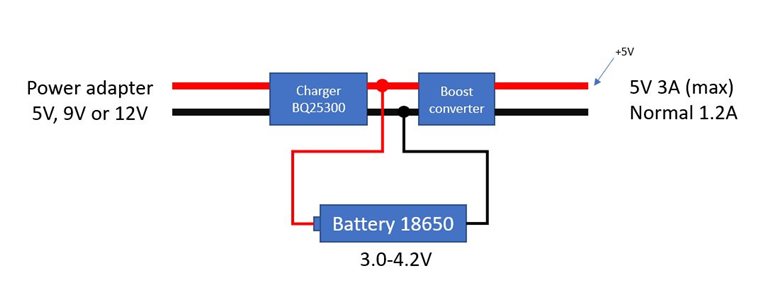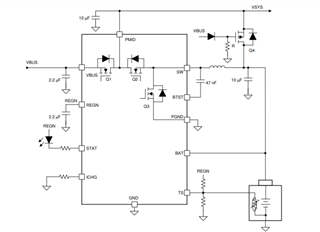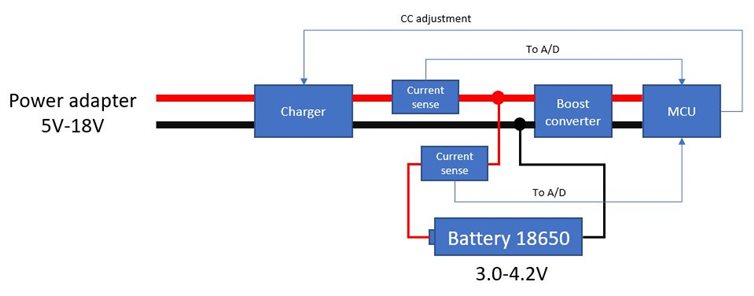Other Parts Discussed in Thread: INA181
Hi,
I am designing a single cell charger with the charger IC being the BQ25300 and a boost converter at the output in order to increase the voltage from the battery range 3.0-4.2V to a stable CV 5.0V.

My concern is focused on how BQ25300 will behave when the power adapter is connected while the load at the 5V output of the boost converter is drawing some current.
At 9.3.2 Battery Charging Management i read "The charger terminates the charging cycle when the charging current is below termination threshold ITERM and charge voltage is above recharge threshold(VBATREG - VRECHG_HYS), and device is not in IINDPM or thermal regulation."
My concern is whether the charger will be able to function properly with the boost converter and the load connected.
The way i understand it (until i don't) is as follows:
Scenario: The boost converter draws 1.5A from the battery with its' voltage (under load) being 3.8V. The charger is connected to the battery and gets into fast charging mode as per ICHG (set by the R). Part of the ICHG goes to the battery and the rest to the boost converter. Since battery is being charged with a current > 0A its' voltage will eventually cross the (VBATREG - VRECHG_HYS) threshold. I am not sure how this scenario goes on given that the boost converter continues to draw 1.5A from the battery. Can you pls fill in the gap?
What i do not understand is how the charging current is set based on the battery voltage level. Can you pls clarify on that?
Regards
Manos Tsachalidis



